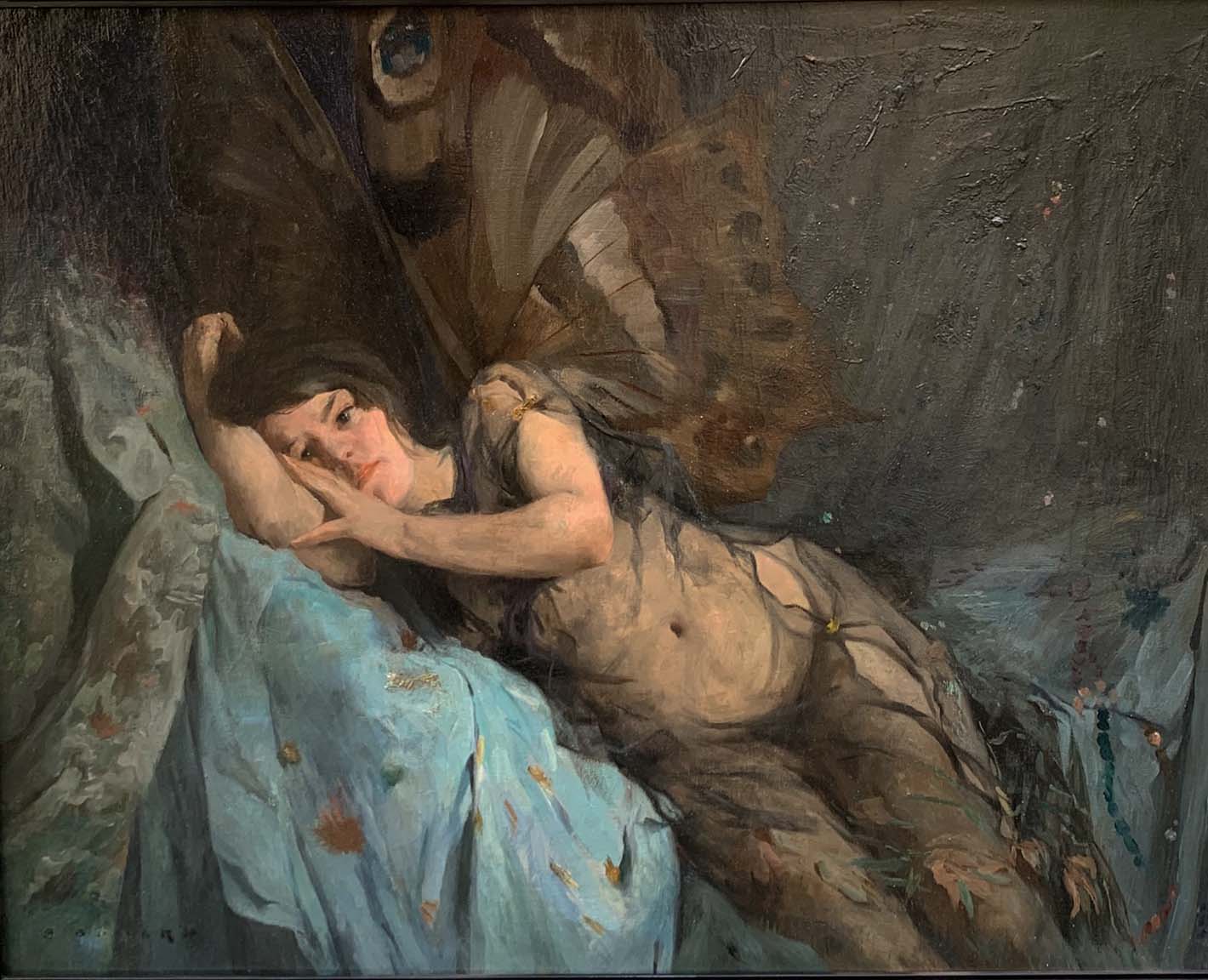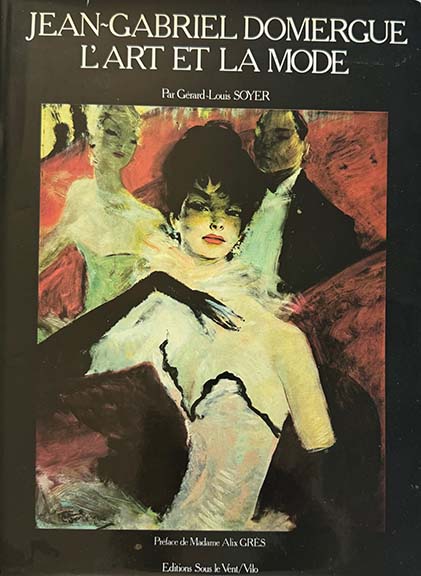

PIERRE GODARD
"REPOS DE PSYCHE"
OIL ON CANVAS, SIGNED
FRANCE, C.1929
25.75 X 32 INCHES

________________________________________________________________________________________________________
Jean-Gabriel Domergue
1889-1962
Jean-Gabriel Domergue was born in Bordeaux in 1889. His father, a journalist and art critic, took him to visit artists’ studios, which quickly revealed his attraction to painting.
Shortly after arriving in Paris, at the age of fourteen Jean-Gabriel Domergue won first prize in a municipal drawing competition and received his first commission, a portrait of a woman.
Starting in 1906 he went to several studios. Jean-Gabriel Domergue spent time with Toulouse-Lautrec, a distant cousin, in his studio, and with him discovered the Moulin Rouge and its dancers.
Domergue borrowed and then shared a studio above the studio of Degas, on rue Massé. Despite a cold welcome at first, Degas befriended him and for more than a year taught him how to look, and to see.
Domergue also met Boldini, whose fiery and distant touch would particularly influence him. Starting in 1920, the year of his gold medal at the Salon of French Artists, his work was extremely popular.
Jean-Gabriel Domergue was sought out by advertisers for catalog covers and posters, by the fashion world as a designer, and as a painter of “la Parisienne”.
With a skilled and spiritual brush, Jean-Gabriel Domergue had the talent to convey the racy, light, sparkling side of a pretty woman. Despite his apparent ease, Domergue worked a great deal, and his sketchbooks are abundant. Domergue declared himself the “ creator of the pin-up ” and would be the unmatched portraitist of the French and foreign aristocracy, painting Nadine de Rothschild, Princess Ruspoli and the Duchess of Grammont. Named Knight of the Legion of Honor in 1933, Jean-Gabriel Domergue was elected a member of the Institute of the Academy of Fine Arts in 1950. Domergue became a curator of the Musée Jacquemart-André in Paris in 1955 and organized important exhibitions there, including one dedicated to Lautrec in 1951, and Goya in 1961.